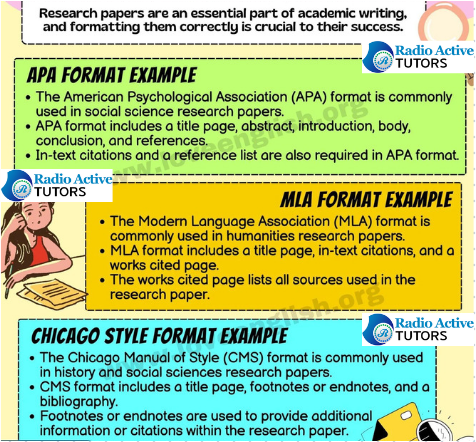Introduction
Research papers are the backbone of academic scholarship and knowledge dissemination. They allow scholars to investigate, analyze, and communicate their findings to the academic community and beyond. A well-structured research paper not only conveys the author's ideas effectively but also adheres to established formats and conventions, making it accessible to readers and upholding the standards of academic integrity. In this comprehensive guide, we will expound on various research paper formats, their key elements, and the reasons behind their use.
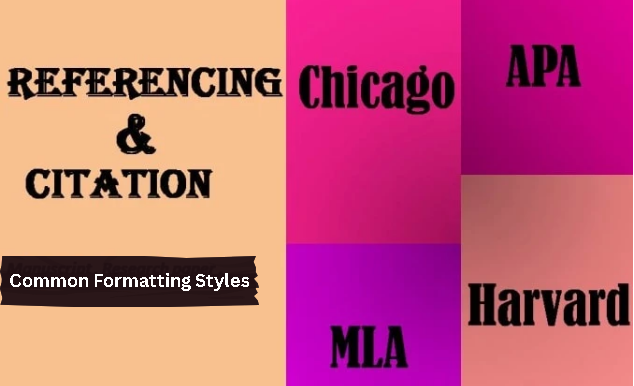
I. The Importance of Research Paper Formats
Research paper formats serve several critical purposes:
Organization and Structure: They provide a framework for organizing ideas, evidence, and arguments in a logical sequence, making it easier for readers to follow the author's thought process.
Clarity and Readability: Proper formatting enhances the clarity of the paper, helping readers locate essential information, such as citations or headings, with ease.
Citation and Attribution: Formatting styles dictate how sources are cited and referenced, ensuring proper attribution to the original authors and sources.
Academic Integrity: Adherence to specific formats ensures academic honesty, as it prevents plagiarism and misrepresentation of sources.
Publication Requirements: Many journals, publishers, and academic institutions have their formatting guidelines. Adhering to these standards is essential for publication.
II. Common Research Paper Formats
There are several commonly used formats for research papers, each designed for specific academic disciplines and types of research. The most prevalent formats include:
APA (American Psychological Association) Format: In-Depth Explanation

The APA (American Psychological Association) format is one of the most widely used and recognized styles for academic writing, particularly in the social sciences, psychology, and related disciplines. It provides specific guidelines for structuring and formatting research papers, ensuring clarity, consistency, and academic integrity. In this comprehensive explanation, we will delve into the key elements of the APA format, its use, and its significance.
KEY FEATURES OF APA FORMAT
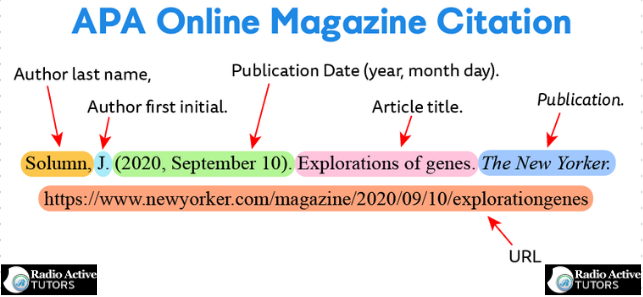
I. Title Page
The title page is the first component of an APA-formatted research paper. It serves as the initial impression and typically includes the following elements:
Title: The title of the research paper should be clear, concise, and informative. It should reflect the main focus of the study.
Author's Name: The name of the author(s) is centered below the title. In a student paper, this may also include the course name and instructor's name.
Institutional Affiliation: The author's institutional affiliation (e.g., university, department) is included on the title page. In the case of multiple authors from different institutions, each author's affiliation should be noted.
Running Head: The running head is a shortened version of the paper's title (50 characters or less) and appears at the top of each page. It provides a quick reference to the paper's topic and author.
Page Number: The page number is flush with the right margin and is placed in the header, aligned with the running head.
The title page is an essential component that conveys basic information about the paper, authorship, and institution. It ensures clarity and consistency in paper presentation.
II. Citations and References
APA format places strong emphasis on proper citation and referencing. In-text citations and a corresponding references page are used to attribute sources and provide readers with the information needed to locate the original publications.
In-Text Citations:
In-text citations in APA format include the author's last name and the publication year within parentheses, e.g., (Smith, 2020).
For direct quotations, include page numbers as well, e.g., (Smith, 2020, p. 45).
Multiple authors can be cited using "et al." after the first author's name, e.g., (Smith et al., 2020).
References Page:
The references page lists all sources cited in the paper in alphabetical order by the author's last name.
Each entry includes the author's name, publication date, title of the work, source (e.g., journal, book), and publication details (e.g., publisher, volume, page numbers).
APA provides specific formatting guidelines for different source types, including books, journal articles, websites, and more.
Proper citation and referencing are critical in academic writing to avoid plagiarism and give credit to the original authors. The references page is a valuable resource for readers interested in exploring the cited sources.
III. Headings and Subheadings
APA format utilizes a hierarchical system of headings and subheadings to organize the content effectively. This system allows for clear and logical presentation of the paper's structure.
Level 1 Heading: Centered, bold, title case (e.g., Introduction)
Level 2 Heading: Left-aligned, bold, title case (e.g., Methodology)
Level 3 Heading: Indented, bold, sentence case, ending with a period (e.g., Data Collection Procedures.)
The use of headings and subheadings aids readers in navigating the paper, understanding its structure, and identifying key sections.
IV. Writing Style and Language
APA format encourages a formal, concise, and clear writing style. Here are some key language and style considerations:
Use the third person, avoiding first and second person (e.g., "I," "we," "you").
Maintain a scholarly tone and avoid colloquial language.
Use active voice whenever possible, as it enhances clarity.
V. Additional Elements
APA format includes guidelines for other elements like tables, figures, and appendices:
Tables and figures should be numbered and titled, with source information provided below.
Appendices may include supplementary material such as questionnaires, raw data, or detailed explanations, referenced within the text.
MLA (Modern Language Association) Format: In-Depth Explanation

The Modern Language Association (MLA) format is a widely recognized style for academic writing, particularly in the fields of literature, languages, and the humanities. MLA is known for its simplicity and consistency, making it an ideal choice for many researchers and scholars. In this comprehensive explanation, we will delve into the key elements of MLA format, its use, and its significance.
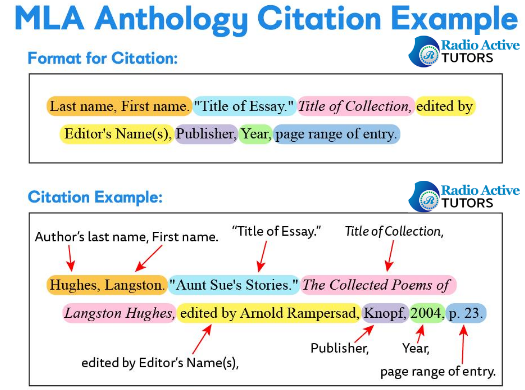
I. Document Formatting
MLA format places specific requirements on the overall document structure, including:
Margins: Set all margins to one inch on all sides of the paper.
Font: Use a legible and standard font, such as Times New Roman or Arial, in 12-point size.
Line Spacing: Double-space the entire document, including the text, block quotes, and the
Paragraph Indentation: Indent the first line of each paragraph by half an inch (0.5").
Page Numbers: Include page numbers in the top-right corner of each page, with your last name followed by the page number.
II. Title Page
In MLA format, a separate title page is typically not required unless specifically requested by your instructor. If needed, the title page should include:
Title: The title of your paper, centered, approximately one-third down the page.
Author's Name: Your name, also centered below the title.
Instructor's Name: The name of your instructor, followed by the course and the date, placed in the lower third of the title page.
III. Header
The header in MLA format appears at the top-right corner of each page and includes:
Your last name followed by a space and the page number. The header should be aligned to the right margin.
IV. In-Text Citations
MLA format employs parenthetical in-text citations to acknowledge sources. In-text citations include the author's last name and the page number (if applicable) and are placed within the text. Here are some examples:
Direct Quotation: When quoting directly from a source, include the author's last name and page number, e.g., (Smith 45).
Paraphrasing or Summarizing: When paraphrasing or summarizing ideas from a source, include only the author's last name, e.g., (Smith).
No Page Number: If the source has no page number, omit it, e.g., (Smith).
Multiple Authors: For sources with multiple authors, include all their last names in the citation, e.g., (Smith and Johnson 32).
More Than Three Authors: For sources with more than three authors, use "et al." after the first author's last name, e.g., (Smith et al. 23).
Two Works by the Same Author: Differentiate between two works by the same author by adding a shortened title to the citation, e.g., (Smith, "Title A" 50).
V. Works Cited Page
The Works Cited page in MLA format is a separate section at the end of your paper, listing all the sources you cited in your research. The Works Cited page is organized alphabetically by the author's last name or the title of the source if there's no author. Key elements of the Works Cited entry include:
Author's Name: The author's name is listed in reverse order (last name, first name).
Title of Source: The title of the source is placed in quotation marks for shorter works, like articles or chapters, and italicized for longer works, like books or films.
Title of Container: For sources that are part of a larger work, like an article in a journal or a chapter in a book, the larger work's title is italicized and followed by a comma.
Publisher: The name of the publisher is included for books and, if applicable, the volume and issue number for journal articles.
Publication Date: The date of publication is placed after the author's name and is followed by a period. Here's an example of a book entry on the Works Cited page:
Smith, John. The Art of Writing. Oxford UP, 2019.
VI. Quotations and Formatting
MLA format provides specific guidelines for handling quotations:
Quotation Length: For shorter quotations (fewer than four lines of prose or three lines of verse), use double quotation marks within the text.
Block Quotes: For longer quotations, set them off from the main text by indenting the entire quote one inch from the left margin. Do not use quotation marks for block quotes.
Ellipses: When omitting words from a quotation, use an ellipsis (three periods) to indicate the omission. For example, "The...quick brown fox."
Italics: Use italics for the titles of books, periodicals, and longer works. For example, Moby-Dick.
Chicago Style Format: In-Depth Explanation
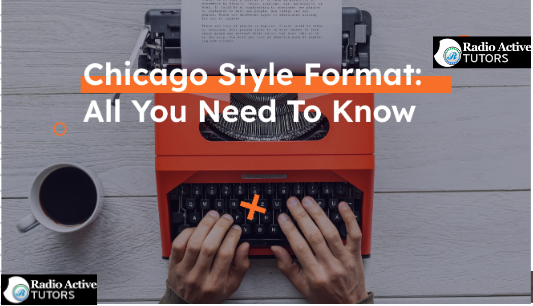
The Chicago Manual of Style (CMOS), often referred to as Chicago Style, is a widely recognized format for academic writing and publishing. It is commonly used in the humanities, history, and some social sciences. Chicago Style offers two primary documentation systems: the notes and bibliography system and the author-date system. In this comprehensive explanation, we will delve into the key elements and components of Chicago Style, its use, and its significance.
KEY FEATURES OF CHICAGO FORMAT
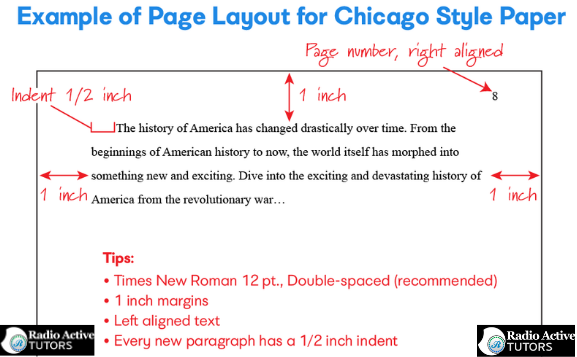
I. Notes and Bibliography System
The Notes and Bibliography system is the traditional and most common form of Chicago Style, particularly in the humanities. It uses footnotes or endnotes to cite sources and a separate bibliography to list all sources used. Here's an in-depth explanation of its key components:
Footnotes or Endnotes: In this system, citations are placed in footnotes at the bottom of the page or endnotes at the end of the paper. Footnotes and endnotes include the author's name, title of the source, publication information, and page numbers. They provide a detailed reference for each citation.
Bibliography: The bibliography is a separate section listing all sources used in the paper. It includes a full citation for each source, with detailed publication information. Entries in the bibliography are arranged alphabetically by the author's last name.
Superscript Numbers: In the main text, superscript numbers are used to indicate the corresponding note. These numbers are typically placed at the end of a sentence or clause.
Shortened Citations: When citing a source that has already been referenced, use shortened citations (e.g., author's last name and page number) to streamline references. Full citations are only given the first time a source is cited.
Full Citation: Full citations in the notes and bibliography include author names, titles, publication information, and page numbers. They provide readers with the information necessary to locate the original source.
II. Author-Date System
The Author-Date system is primarily used in the sciences, social sciences, and some humanities. In this system, in-text citations are used in the author-date format, and a reference list is provided at the end of the paper. Here's an explanation of its key components:
In-Text Citations: In the Author-Date system, citations are made within the text in parentheses (author's last name and publication year), e.g., (Smith 2020).
Multiple authors are cited by listing all last names in the order they appear on the source, e.g., (Smith, Johnson, and Brown 2021).
For sources with no author, the title is used, e.g., ("Title of the Source" 2019).
Reference List: At the end of the paper, a reference list is provided, which includes full citations for all sources cited in the text.
Entries in the reference list are arranged alphabetically by the author's last name or the title of the source. Use of "et al.":
When citing sources with multiple authors, you can use "et al." after the first author's name if there are more than three authors. For example, (Smith et al. 2018).
Page Numbers: Include page numbers when quoting directly from a source. They are placed after the publication year in the in-text citation, e.g., (Smith 2020, 45).
III. Additional Elements
Chicago Style includes several other elements that contribute to its comprehensive and scholarly nature:
Headings and Subheadings: Chicago Style provides a system of headline capitalization for headings and subheadings, which can help organize content effectively.
Title Page: Chicago Style offers guidelines for creating a title page that includes the title of the paper, author's name, course information, and more.
Tables and Figures: Guidelines are provided for formatting and numbering tables and figures, including the use of captions and source information.
Quotations: Chicago Style offers specific rules for formatting and punctuating quotations within the text.
Appendices: If additional material, such as questionnaires or data, is included, appendices provide guidance for their placement and formatting.
IV. Writing Style and Language
Chicago Style encourages a formal, scholarly writing style and provides guidance on a wide range of language and style issues, including:
- Use of the third person (avoiding first and second person).
- Proper use of punctuation and grammar.
- Clarity and precision in writing.
- Spelling and hyphenation conventions.
Harvard Format: In-Depth Explanation

The Harvard format, often referred to as the Harvard referencing system or author-date referencing, is a widely used and versatile style for academic writing and referencing sources. It is popular in various disciplines, including the humanities, social sciences, and natural sciences. The Harvard format places a strong emphasis on citing sources within the text using author-date citations and providing a detailed list of references at the end of the document. In this comprehensive explanation, we will delve into the key elements of Harvard format, its use, and its significance.
KEY FEATURES OF HAVARD FORMAT
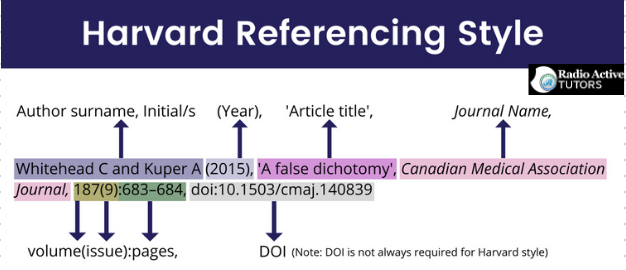
I. In-Text Citations
The Harvard format employs in-text citations to acknowledge sources. In-text citations include the author's last name and the publication year, all enclosed in parentheses. Here are some examples of Harvard in-text citations:
Direct Quotation: When quoting directly from a source, include the author's last name, the publication year, and the page number, e.g., (Smith 2020, p. 45).
Paraphrasing or Summarizing: When paraphrasing or summarizing ideas from a source, include the author's last name and the publication year, e.g., (Smith 2020).
No Page Number: If the source has no page number, omit it, e.g., (Smith 2020).
Multiple Authors: For sources with multiple authors, include all their last names, separated by "and," e.g., (Smith and Johnson 2020).
Three or More Authors: If there are three or more authors, list the first author's last name followed by "et al.," e.g., (Smith et al. 2020).
Multiple Sources: When citing multiple sources in the same sentence, list them in alphabetical order, separated by semicolons, e.g., (Smith 2020; Johnson 2019).
II. Reference List
The reference list in Harvard format is a separate section at the end of your paper, listing all the sources you cited in your research. The reference list is organized alphabetically by the author's last name or the name of the organization or institution, or the title of the source if there's no author. Each reference entry includes the following key elements:
Author's Name: The author's last name is listed first, followed by their initials. If there are multiple authors, separate their names with commas.
Publication Year: The publication year is placed in parentheses, followed by a period.
Title of Source: The title of the source is in italics or underlined for longer works (e.g., books, journals) and enclosed in quotation marks for shorter works (e.g., articles, chapters).
Title of Container: For sources that are part of a larger work, like an article in a journal or a chapter in a book, the larger work's title is in italics and followed by a comma.
Volume and Issue: For journal articles, provide the volume number, issue number (if applicable), and page range.
Publisher: For books, include the name of the publisher, and for journal articles, provide the name of the journal. Here's an example of a Harvard format reference entry for a book:
Smith, J. (2020). The Art of Writing. Oxford University Press.
III. Writing Style and Language
Harvard format encourages a formal and scholarly writing style. Here are some key language and style considerations:
- Use of the third person, avoiding first and second person (e.g., "I," "we," "you").
- Proper use of punctuation and grammar.
- Clarity and precision in writing.
- Spelling and hyphenation conventions.
AMA (American Medical Association) Format: In-Depth Explanation
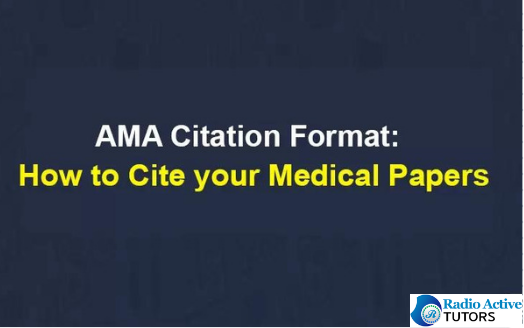
The American Medical Association (AMA) format is a widely recognized and specialized style for academic and medical writing, primarily used in the field of medicine and the biomedical sciences. The AMA format provides specific guidelines for citing sources, organizing research papers, and formatting medical manuscripts. In this comprehensive explanation, we will delve into the key elements of the AMA format, its use, and its significance in the medical and scientific communities.
KEY FEATURES OF AMA FORMAT

I. Citations and References
AMA format places a strong emphasis on precise and consistent citation and referencing of sources to ensure clarity, academic integrity, and transparency in medical research. The AMA format uses a numeric citation system, also known as Vancouver style, which is characterized by the following key elements:
In-Text Citations: In-text citations in AMA format are denoted by Arabic numerals, which appear as superscript numbers within the text. These numbers correspond to the order in which the sources are cited.
Reference List: AMA format uses a numerical reference list at the end of the document. References are numbered according to the order of their appearance in the text.
Citation Style: For each source, the reference number appears as a superscript in the text, and the corresponding reference number and source details are listed in the reference list.
Multiple Authors: When citing sources with multiple authors, include all author names in the order they appear in the source, up to six authors. For sources with more than six authors, list the first three authors followed by "et al."
Page Numbers: AMA format does not require the inclusion of page numbers in in-text citations, but its common practice to add them when referencing a specific page or section within a source.
II. Reference List
The reference list in AMA format is a numbered list of sources used in the paper, which is organized according to the order of their appearance in the text. The key elements of a reference entry in the AMA format include:
Author(s): List the author's last name and initials (e.g., Smith JK).
Title of the Source: Include the title of the source using sentence case (only the first word and proper nouns are capitalized).
Source Title: For articles or chapters within larger works (e.g., journals, books), include the title of the larger work in italics or underlined.
Publication Information: Provide publication information for the source, which may include the publication year, journal title (for articles), volume and issue number (for journal articles), and page numbers.
Publisher Information: For books, provide the name of the publisher and the publication location.
Here is an example of an AMA format reference entry for a journal article:
Smith JK. The role of genetics in cardiovascular disease. Circulation. 2021;129(10):1351-1357.
III. Writing Style and Language
The AMA format encourages a formal, precise, and scientific writing style. Some key language and style considerations include:
- Use of third person in academic writing, avoiding first and second person (e.g., "I," "we," "you").
- Clarity and precision in describing scientific concepts, methods, and results.
- Proper use of medical terminology and terminology specific to the research topic.
